Helga Jakobson built a synthesizer system that reads the bioelectric impulse of the plants, and would clip alligator clips onto their leaves. Then the system reads the bioelectric impulse of the plant. More than figuring out what the plants sound like, Helga had to figure out who was singing.
In early 2018, the Assiniboine Park Conservancy, which is located in the western part of the city of Winnipeg in Manitoba, Canada, announced that they would be demolishing their conservatory in April, citing the end of the structure’s lifespan. At that time, artist Helga Jakobson was experimenting with designs for capacitors that could capture plant reactions, and she asked if she could take her inventions into the space to record the sounds of its inhabitants before they were displaced or uprooted permanently. In just three months, she collected over 500 hours of plant song and, for the past five years, she has been composing these sounds into a symphony. Information on the final product, Entropic Symphony, can be found on her website.
Lucie Lederhendler, who is curating an exhibition including new work by Jakobson this September, asked to speak with her about this ambitious project. The following interview has been edited for form and clarity.
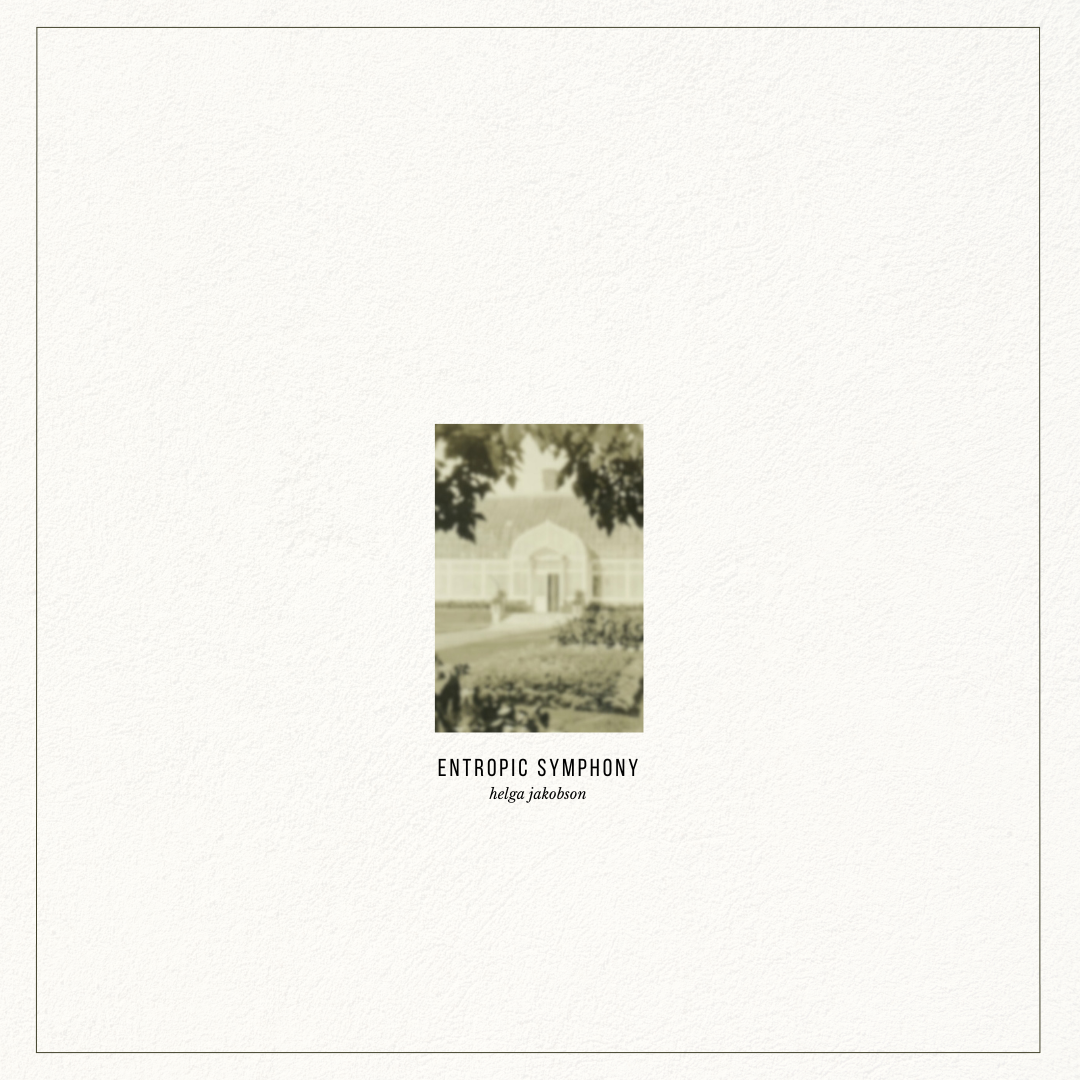
Lucie Lederhendler: I’d like to put the project into context first, because there’s something so meta-sociological in the framework, of the moment when you began your work, in the narrative of the conservancy.
Helga Jakobson: Sure. The Assiniboine Park Conservancy manages the park, the grounds around the conservatory, the zoo, all of the landscape within the zoo, all of the soil within the conservatory, and any other structures or features of that allocated zone.
The overseeing bodies that managed not only that conservatory building but also the larger grounds and the zoo were really the stewards of the space. Historically, there was a much larger volunteer base managing the visitor component, and so, as the conservancy was making decisions around not only around the closure of the space, but also around where the plants would go, which plants could move and which plants could not, they were also providing a lot of stewardship, and doing the work to figure out the new Leaf building at the same time.
I have a lot of respect for the conservancy and the way that they navigated the closure of the space. I found them to be thoughtful down to the microorganisms that they were the stewards of. The way that they spoke about soil, the way that they spoke about the interconnectivity of the bacteria, of the fungal bodies, and really thinking about how best to provide care for all of the organisms that live inside of the space. It was really magical to hear the depth to which they considered their roles.
The decision to close the conservatory was a really fraught and upsetting one, on so many levels. What was interesting about the closure was that it brought out these multi-layered aspects of grief that people felt on so many different fronts. For instance, there was the grief of the conservancy, the staff, who had worked there for a very long time, who had felt very personal relationships with the plants that they were stewards of, and then also the volunteers, and community members who were all losing these beings that were deeply, deeply cared for, down to a microbial level. Not to mention the community members, long-standing volunteers, and environmentalist groups, to name a few.
LL: There’s something about the idea of a conservatory that has a built-in obsolescence, but you wouldn’t take them away, right? That’s where I see the meta-sociological framework most clearly.
HJ: Oh, indeed. The conservatory itself, at Assiniboine Park specifically, but all conservatories are these really interesting meta-sociological spaces. They’re at once antiquated and also futuristic. They’re an ideal, this utopia, a kind of space of hopes and dreams and growth, while also being reliquaries–spaces that house something fantastical that could just never exist. The plants within a conservatory would never live so close to each other. They would live in more complicated relations, so there’s a layer of impossible, and also communal, space. For instance, the Assiniboine Park Conservatory was one of the last free conservatories or green spaces of that capacity in Canada. There are only a few left that are free of charge, which also speaks to a larger issue of the lack and loss of communal gathering spaces, of free commons for folks to enjoy.
LL: So, any displacement of plants will have obsolescence, but that’s okay.
HJ: I’m not sure even if it’s obsolescence so much as entropy. Of course, the space itself is man-made, but it’s clear in planting a plant that it will die―even trees, which have a longer life span. Most of the plants within that space just could not live as long as the humans that love them. One of the main reasons that the space itself closed, and this aligns more I think with what you’re getting at―was the boiler. The boiler was one of the biggest issues in the space, but really it was climate change. They built the building around this boiler in 1914 to manage all of the weather inside, and it was a massive beast of a machine that was built in a time before the weather fluctuated like it does now. It just couldn’t keep up. So, the boiler was slowly―and towards the end, rapidly―dying.
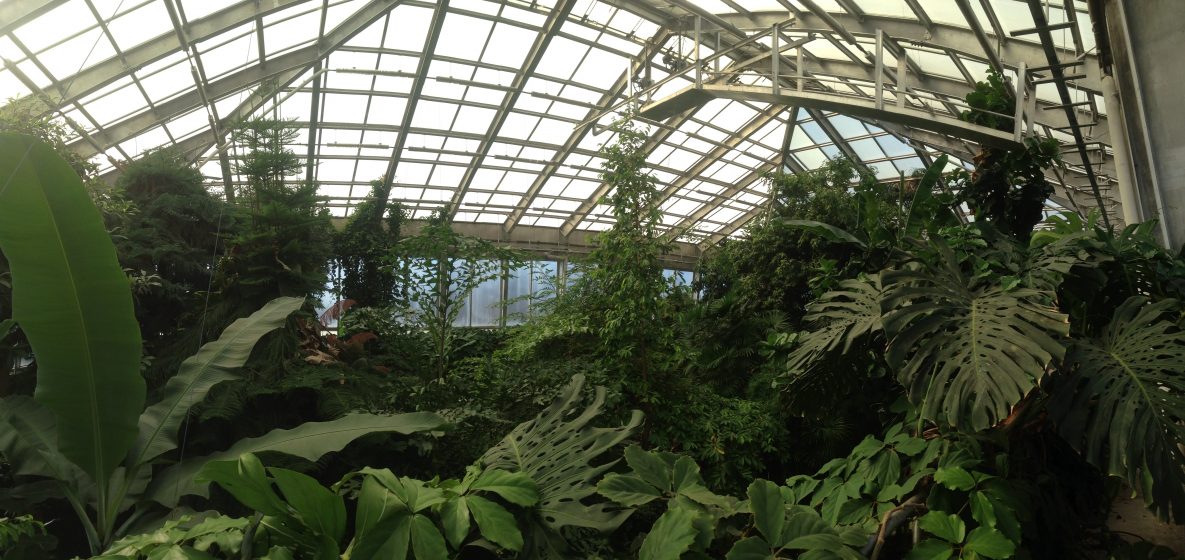
It was fantastic in a way because some of the plants in the space, too, would just not stop growing. In this way, yes, the boiler became obsolete, but some of the plants, which should have stopped growing at a certain point, just didn’t. There was one that I really really loved, a gigantic palm that they kept topping―they would just cut it off and it would just keep growing. The first time that they topped it, it was because it had grown so tall that it had cracked one of the windows on the roof. I called it the roof-crushing palm. It just wouldn’t stop. The space had outgrown itself, roots were cracking the foundation, and the boiler―slowly, all together, they created this amazing chaos that had a kind of decadence of ruin that we’re all drawn to. Maybe not all, but I would say a lot of us, are drawn to the beauty in decline.
It felt like a really bombastic environment to be invited into. I had an exhibition that I was building machinery for at the time that would play plants. At the same time, I was feeling my own feelings about the space closing, and thinking about the inner workings of plants, and I thought I just had to reach out. When they invited me in, and I hadn’t built the machinery yet! I had to work around the clock to figure out this new system, a new recording device, and amplifier, while also trying to understand what it would be like to compose within that environment. I became an expert really fast in the synthesizer system that I built.
There was more and more news coverage about the space closing, so people started coming more and more. When I first started doing this work in residence, I would see three or four people in a day and, by the end, it was hundreds of people. It was completely out of control.
LL: When you say you were working in residence, you’re literally in among the plants and the soil?
HJ: Oh yeah, and in the rooftop―they allowed me access to the top tier that they water from so I could work away from the public, as well as access the leaves and green space up above the terrain level.
LL: When you talk about these people swarming to have a desperate last visit, it makes me think of a colleague of mine, Dr. Alysha Farrell, who talks about “unmetabolized grief” in the context of the climate crisis―this feeling of helplessness is just grief with no direction. When you think about grief and mourning in the context of the loss of these plants, and, in particular, I think there was a Norfolk Pine that they couldn’t save.
HJ: Yeah, that was the one that people had the most feelings about, for sure. It was an interesting one. It had been topped, I think they said, 13 times in its life. Without the context of direct conversations with the staff there, I would have felt that that was barbaric―or quite aggressive. Being able to see it from the top, though, from where the public would never have seen it, it was quite clear that topping is why this was such a majestic tree because it had been shaped by humans.
So, there was a funny feeling that I had about the Norfolk, and how I felt during the entire residency. My entire perspective was shifted back and forth so many times. Beforehand, I had some pretty romantic ideas about the conservatory. I grew to feel that it was a very colonial space, like a cabinet of curiosities.
Then I also had a community perspective. One of the people that I saw almost every day in the space, who really used the space and needed it, was a mother and her daughter. The mother was in her 80s and had dementia and found a lot of peace there. They were quite low-income and didn’t have a lot of physically accessible spaces to go [to] in Winnipeg in the winter, so it was an incredible resource for them, and they really valued it. So, I had this perspective of the space being a gathering place for folks like that.
Then as the news came out that the conservatory was closing, and people started coming more and more, there were so many really interesting stakeholders who were coming in protest. They had a lot of thoughts about right and wrong and weren’t informed about the very, very thoughtful process and practical components of the closure. I think that the idea of metabolizing feelings of eco-anxiety―there are a lot of different terms that you can put towards that kind of feeling―comes down to what do we do, and how do we live on a damaged earth?
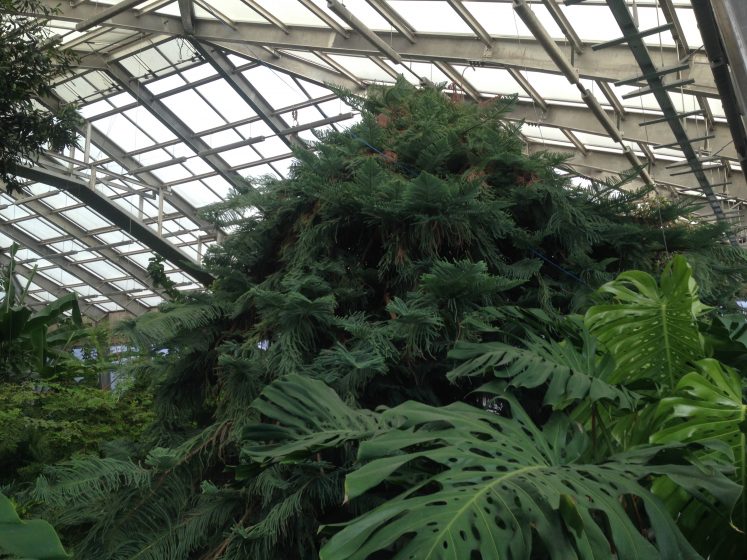
I think a lot of the reactions that people had to the closure were rooted in exactly that. The Norfolk was a great example. This idea that this tree was so beloved because of the size and the shape and the beauty of it, that the general public had no idea that it had been manicured so extremely for so many years, and that’s what created that majesty. That was an illuminating moment for me, compounded with the idea that that one tree can mean so much―I think it is a bit fantastical. The conservancy knew that people would have so many feelings about the Norfolk being cut down, and so they had worked to create cloned seeds from that tree to give out. I’m not sure if this ever happened but, in theory, you’d be able to grow your own, so to speak. They worked to create other registrations of the tree’s existence, going so far as to reach out to Bartholomäus Traubeck about creating a tree ring recording of it.
The whole experience was really a metaphor because you build yourself a little cabinet of curiosities, knowing that it’s going to eventually fail. It just cannot stay forever. The idea of roots breaking it down and reclaiming it recalled a Margaret Atwood kind of mindset for me, in the MaddAddam series when she talks about the kudzu taking over, and how these plants that weren’t really meant to be there would just take over the world anyways.
Some people that I spoke to found a lot of peace in the idea that nature just wins in the end. Even if that means that they’re allowed to die, like these palms, breaking free through the roof, even though they could not survive in this climate. Maybe they don’t want to live for this extended period of time that they’re being cared for. This Norfolk pine that has been topped so many times, its roots are the ones crushing the foundation. Is it saying, “Enough now, let me die”?
There’s a lot of really interesting takeaways, and when I wonder, did they―the Conservancy―let us grieve right? Did they allow people to do what they needed to do to get that kind of closure and peace? Did that closure remind us that we’re all living on this damaged earth that sometimes feels beyond repair? I think that they really did a good job of it. They allowed protesters to come in as choirs to sing to the trees, and me to come in and record all of these trees. They allowed all of their volunteers to have a private day after the closure and to walk through the space. So, I think when it came to grieving well, they did that. They were faced with a situation that was inevitable.
How do we live in community together with these systems that are going to fail? As our ecosystem is reaching some critical points, I think all that we can learn to do as humans is to grieve well. To be activated and informed and mobilize to create impact where we can individually and to lobby for structural change.
LL: The medium of symphonic arrangement is such a time-tested mode for the expression of grief. Did that idea begin with the concept? Was it, “I want to create an elegiac symphony”?
HJ: No, it wasn’t. I felt compelled, thinking about the deep and varied layers to the story of the closure. Grief, death, dying, ephemerality; these are all core elements of my art practice. Sound at that point was a very new component to my work. I approached it saying, I can do this thing, and then when they said yes, I had to figure out how to do it.
I have no interest in anthropomorphizing. I have no interest in speaking for things. I just had the impulse to allow these plants, or an impression of them, to be recorded. For posterity, but also to see what would happen, just as a pure research-based experiment. Because there were hundreds of plants, I needed to figure out a framework for how I would organize it. So, I decided to lay it out as an orchestra. Then, instead of trying to assign each plant according to, “You look like a tuba, so you’ll be the tuba,” I tried to just facilitate. That made it a lot easier to organize in that sense.
Then I really had to think about tonal qualities, I had to think about what MIDI libraries were readily available because I was working at a pretty fast pace. So, more than figuring out what the sounds would sound like, I had to figure out who was singing, and how to allow that to happen.
LL: There’s a parallel between the idea of handing the mic to the plants and letting them speak to the humanist idea of centring victims’ voices in conversations about trauma, in that both have to be done with structured care. So, how much intervention did you allow yourself? Did you set parameters for how much manipulation you would have in that voice collection?
HJ: Yeah, my clumsy way of working in that space was to act like Vinciane Despret, who speaks to the importance of being a polite visitor. There cannot be a world in which my hand is not involved. All that I can do is set up the most equal and fair parameters that will allow for a less biased expression. So, I worked with the MIDI libraries that were available to me through LogicPro, that way I was not tuning or amplifying one or the other in the recording process. I just simply let them play.
That’s been more of a consideration as I’ve been composing: where do I cut and where do I not? The first iteration of the symphony was just a 15-minute-long recording of all of the files all at once, which sounds very droney, very dull, very very low tones. There’s this great hum that happens. This is something where, had I walked in with a synthesizer built beforehand, I could have had a little more control, but it’s almost better for me and my perspective that I was learning with the plants, and so the recordings just were as they were. It felt like sympoiesis[1] in the sense that it was an adaptive and evolving knowledge base, a collectively-built system that could only grow as fast as I could build it, while also recording at this rapid pace. One led to the other, led to the other, led to the other. So, I do really feel that it was kind of a co-mingled experience.
LL: Can you describe how you’re actually collecting these noises? And what’s the current status of the project?
HJ: I built a synthesizer system that reads the bioelectric impulse of the plants, and I would clip alligator clips onto their leaves, stems, bark, or roots; all of these different plants, as many of them as I could in the timeframe I was allotted. Then the system reads the bioelectric impulse of the plant and outputs it as MIDI libraries. The MIDI libraries that I accessed were those readily available through LogicPro, so they’re pre-programmed as orchestral instruments.
I collected over 500 hours of recordings over those months in 2018, and I’ve been composing them into the symphony since then. The official title is Entropic Symphony, it’s 45 minutes long, and I received funding from Manitoba Art Council to produce a record of it, a physical LP. With supply chain issues, that pressing has not happened yet, but it will very soon.
LL: The idea of bioelectric energy, you’ve said before that it’s more interesting when it fluctuates, and it often fluctuates when it’s near to another bioelectric organism. Which makes the song about relationality, really. Your position to it, and its position to other plants, and other organisms. I remember you said that there’s a parallel in the relationship between the individual plant and the individual human; and the individual human and their touch screen. I love that because it helps me conceive of myself, essentially, as a bioelectric organism in the same way I can essentialize a plant. It really grounds us in the ecosystem and pulls away those distinctions.
HJ: I think one of the most poetic things that I’ve understood, through researching technology, biology, and more scientific frameworks for thinking with plants, has been the equalizers, the great equalizers on the planet. Those are water, electricity, and temporality. We’re all, all of the beings on the Earth, all of the terran beings, going to die, we all have to have water and nourishment, and we all have to have electricity running through us. There are so many moments in the human day that are affected by electricity.
It reminds me of Mary Shelley’s Frankenstein and this idea of bioelectric galvanization–the idea that you could shock dead animals, and they would live again. There was this great moment of reckoning where people in the arms race of scientific research were digging up dead bodies to experiment on, a massive race to be the first to capitalize on electricity in favour of immortality. Mary Shelley wrote a poignant piece about care and what would happen if they succeeded, and what is right and what is wrong in that.
In this ecosystem of thought, of scientific reasoning, of logic, of artistic expression, it’s really important to situate ways of thinking side by side to create a dynamic mode of thinking. Building these pieces of machinery and interfaces helped me to resituate myself on a one-to-one scale with the plants that I’m working with. There’s something just so magic about being able to touch a plant and hear your touch, to walk by a plant and see how that affects it and having another synapse or another sensorium for that experience. That’s part of what I hope to do with my work, to help people reposition themselves and to provide a conduit for compassion in a different way.
LL: When you were in among your musicians, the plants, can you describe your experience of your own aliveness? Of your mass? This question is also interested in the relationship between vitality and aliveness, vitalism, and life.
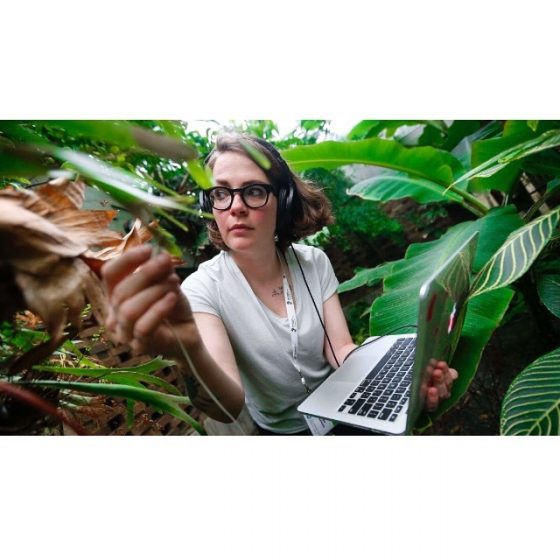
HJ: It’s a really complicated idea, the idea of life and aliveness and being, and you know that’s why we have so many schools of thought and so many beautiful words for it. I think for me, my aliveness and my mass and my beingness all felt very present for me in the fact that it was such a whirlwind. I didn’t have a lot of time to pause, to reflect on being present. I was almost forced through the paces, racing against time, racing against the closure, racing against the decline of these plants or the displacement of them, to find a way to not think too much while working. Instead, I tried to get into a meditative state, and just be present. To just figure out with my hands and with my ears what was happening, and how to tune my instrument. It felt like holding a metal detector and walking over the earth, listening for fluctuations. As time went on, I was able to anticipate where there would be more deposits of excitement, of noise, of sound, of clarity in a certain way. I gained a really meaningful piece of wisdom that was passed on to me by my Amma, my grandmother, when I told her that I had the feeling that our family has a lot of people in it who see ghosts, folks with a relationship to the metaphysical or people who have prophetic dreams. I asked if she had a way of understanding that. I asked, “Do you think that there’s some psychic ability in our family or something like that?”
She said, “You know, I don’t know. That’s not up to me to understand, but what I do understand is that when I am very quiet and when I learn to listen better, I’m able to be more intuitive. And I think that intuition is like a muscle, and I think that you exercise it the more that you practice listening.”
That really struck a chord with me, and I felt it firsthand when I was in the space. I think by being very quiet, by trying hard not to impose, but instead to work with, and be in relation, I was very aware, not of my mass, but of my masslessness in a way. It made me feel as though my skin was simply a very thin barrier in-between that electric feeling that I have and the electric feeling that the plants have. To have something tangible representing that felt very empowering. I would walk away from the space feeling light-headed, almost in a trance, because it was so strange to breach that line. That felt really powerful and important.
LL: There was an article published by CTV a little while ago with the headline, “Yes, Plants Can Talk,” that was so infuriating. First of all, because everybody knows this, this is not new at all. It’s research out of Tel Aviv University that uses different sound sensing devices to record ultrasonic sounds, but in order to receive them they have to stress the plants. When I finished the article, I was a little bit disgusted. “You’re torturing them! You’re listening to them scream in pain and patting yourselves on the back!” They were doing things like not watering them, cutting them down to the quick. I understand the nuances that you were talking about with people getting more nostalgic than academic about these things, but surely, we shouldn’t be burying sentiment all together?
HJ: I got a lot of negative feedback myself from people riling against the work, saying that I was trying to say that plants spoke English, or other folks saying that I’m electrocuting them, “and all of this in their last days!” What are the ethics of listening to somebody as they’re dying, and doing nothing? People really have a lot of feelings. With that article―I probably get every article that comes out on major news sources ever, sent to me, from all places in the world, saying “Hey, it’s that thing you do!” All I can say is thanks so much for sending me this horrifying article. Because there are so many sensationally titled, almost clickbait, articles about the research on plants.
LL: The clarification you made there, of no, plants can’t speak English, but they can make sound, they can react, and we can record that reaction with different devices, is making me think about sound really differently. Sounds that are all around us but silent are still communication because there’s a directionality to the wave.
HJ: Well, it’s ephemeral, right? This point that you’re bringing up about the ultra-ultra-ultrasonic―you’re right there have been a thousand researchers doing a thousand bits of really important, and interesting, and also flippant and obscure, and wild experiments with plants for-ever. In the film The Secret Life of Plants, which is a great love of mine to this day, there’s a Japanese couple―a scientific researcher and his wife who’s an avid gardener―who poke a cactus with acupuncture needles. He gets her to start speaking to her plants, and you can clearly hear that the plant is somehow, through relationality, learning to speak the Japanese characters in response to her prompts. I don’t fully understand the mechanisms of how it happens, but it seems very similar to my work in that it taps into bioelectric capacitance, although outputting sine waves instead. It seems as though her hands and physical proximity create a response―the sounds seem to react to her movements.
I think this is a great example of exactly what we’re talking about. It’s truth-ish-ness, it’s scientific exploration, but more, it’s fabulation. Those endeavors are so important as exercises, which can be taken very seriously. That research should be done, and it’s very interesting, but there’s just such a mélange that it’s hard to really understand what is and is not real. Again, I’m not trying to propose that plants have humanesque thoughts, I’m not proposing that plants have the capability to learn language. But I do think that there’s a way that we relate to one another that can be shown through experiments like this, just as much as from a conversation with a granny who sings to her plants.
I’m talking about relationship-building, about how to be better together on this damaged earth. I’m thankful for all the research in that realm although sometimes I want to ask, “Why are you doing that, though? Why is that important to you?” Artists, academics, folks from philosophy backgrounds, from all kinds of different walks of life, have to be quite thoughtful when looking at science. Even in this wild time that we’re living in, with AI generators and all the panic that comes from that, critical voices who are applying thought, who are asking why, can reflect on how often the work is being done for capitalist ends. There can be very insidious backstories to the research.
LL: It seems to me that a lot of the pushback comes from scientific communities, and a lot of the research that’s being done is, like Monica Gagliano, people who tell the story of being exiled, or almost exiled, from the scientific community in order to pursue this work.
HJ: 100%, at least, there are a lot of people that I’m aware of. In The Secret Life Of Plants, there’s a great case study of Acharya Jagadish Chandra Bose, who presented his research showcasing the inner life of plants in front of the Royal Institution in London in 1897, and he was laughed out of the room. Because he was a person of colour, really.
Robin Wall Kimmerer talks about this in Braiding Sweetgrass. She says, “I went into biology because I wanted to know why asters and goldenrod looked so beautiful side by side, and when I told my Ph.D. advisor, they laughed at me.” There are all kinds of people from all walks of life who are invested and interested in this research, who are not listened to in the scientific community because it is a very colonial, very white supremacist, quite misogynistic field. It’s important to be critical about what research gets funded and what doesn’t.
Another book that came out, that tried to model itself after The Secret Life Of Plants, called Brilliant Green: The Surprising History and Science of Plant Intelligence in which they talk about how the research of Cleve Backster, who’s one of the most famous case studies: him and his philodendrons and his lie detector. It talks about when that research was dropped, another researcher proposed that you could capitalize on building a neural relationship with plants and use your plants as an alarm! Or a garage door opener! The inference is that when you’re able to find some sort of capitalist function for these phenomena, then that research will be funded.
LL: I’ve been a little bit obsessed about the privileging of written language recently. It hurts to think about writing as a bad thing, as someone who’s so bookish. But a recent exhibition had me researching the Hindu cosmological cycle, the Chatur Yuga, which puts us in the age of destruction and despair. What happened at the beginning of this age? The most significant thing was that systems of writing were being introduced in the Indus Valley and Mesopotamia. If that starts the age of destruction, maybe it’s because it creates a hierarchy of knowledge.
HJ: Indeed, it’s really true. This is also about the idea of what power is, but there are a lot of different ways of thinking and being in culture that can flatten out that power. Colonization is really in line with the written word or the printing press, in particular. It does make a lot of sense.
LL: These topics are all embedded in oneirophyte, which I’m curating and will include your and four other Winnipeg-based artists’ work. Though it shifts the thinking a little more towards the realm of imagination and dream, rather than the waking emotional realm. The theme of that exhibition emerged from artist research rather than preceding it, from observing what new and digital media artists seemed to be interested in right now, and I’m wondering if you think that there’s something about where you are, something about the city of Winnipeg, that might be directing artistic curiosity in this way?
HJ: That’s a good question. There was a really great exhibition that stirred me into this realm of thinking, years ago, in Winnipeg, put on by Video Pool, called Toxicity, that thought about bioart and the blend of science and art. That was a first. It happened shortly after Janet Cardiff was in town with the Forty Part Motet. So that might have contributed to it. There’s also something about living in such an extreme climate, where you can really feel the pull of climate change because you can see flooding happening, you can see new earth, like in Riding Mountain, where the glacial lake deposited. There’s really interesting geological and vegetative phenomena that happen around here. What’s more, I think being very rooted in farming gives folks a lot of different layers of understanding. It’s been a meeting place for Indigenous peoples since time immemorial, so a lot of minds gather here. It’s Treaty One Territory (1871), so it holds pre-colonial knowledge about relationships to the earth and to people. Maybe those are some elements that inspire artists to reflect on the earth that they’re on.
LL: When we talk about new media and digital media, it’s implied in what you’ve been talking about with this project, that there is a need for new tools of communication.
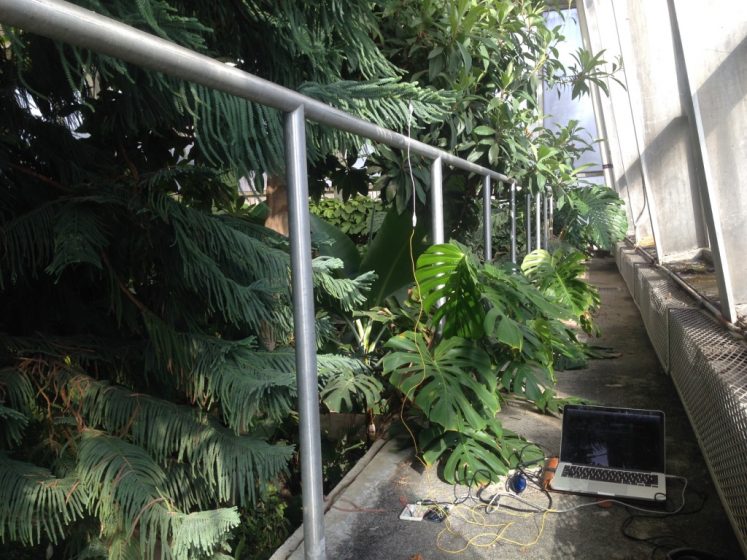
HJ: Totally, and I think that there is a really big draw, especially right now, every year that carries on, moving more and more closer to midnight on the Global Doomsday Clock, we’re really feeling that pressure to live in a different way. In deepening our understanding of colonization and calls to action towards Truth and Reconciliation, there are a lot of political and practical reasons to reposition yourself to the land that you’re on. So, one perspective is social, and another emerges from living on a damaged earth.
LL: Right, just decentring ourselves in general. What replaced the conservatory is The Leaf, which is quite expensive, isn’t it?
HJ: Yes, it’s very expensive! But there are so many layers to that. Volunteerism is at an all-time low, and building materials are so expensive that to have a space like this, there does need to be a cost associated with it. That’s just living under late-stage capitalism. I’m not saying that I think it’s right, but there are reasons for it.
LL: It’s not malicious, it’s not profit-mongering.
HJ: No, it’s not, but it shouldn’t have to be like this.
It’s funny, with the opening, I’ve had a lot of people asking if I’ve gone yet, and I haven’t. I want this project to be done before I set foot in.
LL: That’s pretty sentimental of you.
HJ: I think so too! But there’s also a practical reason, which is that they’re still figuring out some of the hiccoughs in opening, and seeing ragged, over-touched butterflies is not a big draw for me; I think I would feel pretty sad to go in right now. It’s not a fault of the conservancy, it’s just the reality of human impact on space.
Lucie Lederhendler
Brandon
[1] “Sympoiesis is a simple word; it means ‘making-with.’ Nothing makes itself,” From Donna Haraway, Chapter 3: Sympoiesis: Symbiogenesis and the Lively Arts of Staying with the Trouble. Staying with the Trouble. Duke University Press: 2016. p 57.


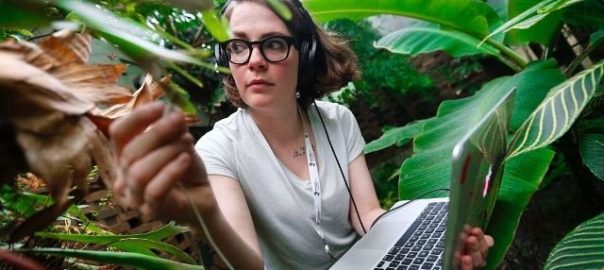
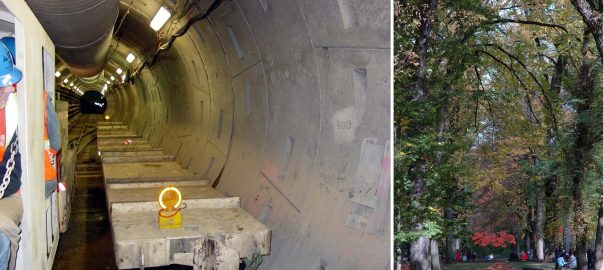
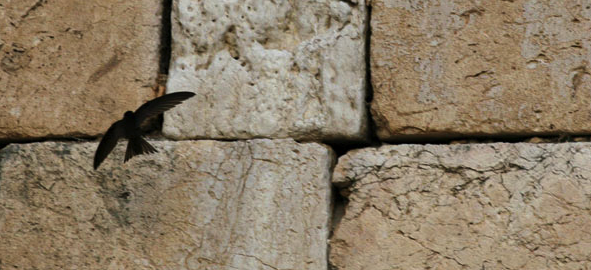

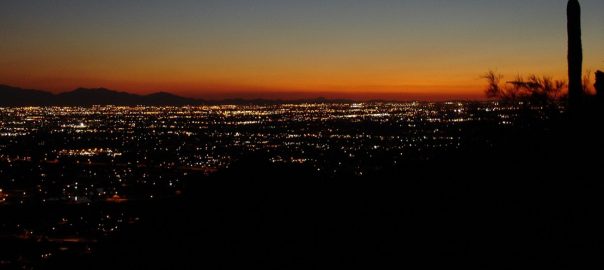
Leave a Reply